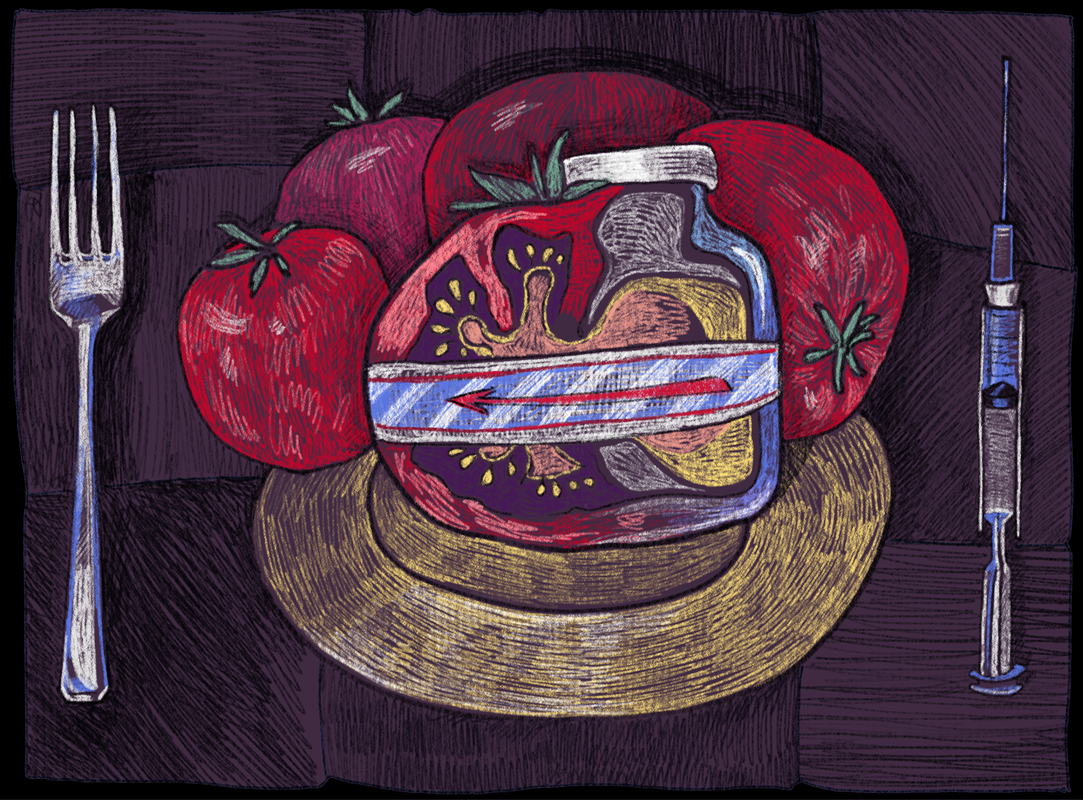|
By Angela Mu As the weather begins to cool and flu season kicks into action, you might notice an increased appearance of sharp syringe needles, dreaded nasal sprays, or perhaps even terrified little kids lining up to receive their shots. This is a time of discomfort for the countless individuals who view immunizations as invasive, painful, or simply bothersome. For these people, receiving oral vaccines may be much more convenient and less nerve-wracking. First introduced in 1990, edible vaccines are typically composed of plants that have been genetically engineered to trigger a response within a person’s immune system after consumption. Unlike traditional vaccines, which directly inject antigens (usually weakened versions of disease-causing pathogens), this method of vaccination introduces them to the human body through genetically modified plants that contain the target antigens. As an indirect process of producing target antigens in plant tissue, Agrobacterium tumefaciens-mediated gene transfer involves the use of naturally occuring bacteria from soil, which normally infect plants with a tumor-inducing gene. However, by genetically engineering the bacteria, the tumor-inducing gene can be replaced with the desired gene capable of immunization stimulation. Direct processes such as gene-gun delivery can also be used to insert target genes into plants. Using a particle gun, microparticles can be accelerated, enabling them to penetrate plant tissue where they can release genes that will be incorporated into the plant’s own genome. As a direct result, the plant can produce the antigen to help confer immunity and act as a vaccine. Once the edible vaccine is consumed, the outer plant wall acts as a shield to prevent stomach acids and digestive enzymes from breaking down the antigen. The antigen can then be delivered to the linings of the digestive tract to be properly absorbed and able to begin stimulating the production of antibodies. Moreover, this oral delivery method can actually offer a higher level of protection than traditional vaccines, as the gastrointestinal linings that the vaccine encounters are the body’s first line of defense where infections are generally initiated. As a cost-effective immunization method, edible vaccines would be especially life-changing for individuals living in developing countries that face vaccine shortages for fatal diseases such as malaria. In these countries, the delivery and administration of traditional vaccines are also hindered by issues concerning refrigeration, transportation costs, and improper needle sterilization, which frequently lead to infection. Cultivating plant vaccines that have the ability to reproduce plants containing the target antigens would allow vaccines to become much more accessible to insufficiently supplied countries and general populations at large. Already, researchers such as Dr. Charles Arntzen from Arizona State University have been genetically modifying potatoes, tobacco, and tomatoes to contain antigens that may elicit immunity for diseases like malaria and hepatitis B. Nonetheless, there are concerns regarding the administration of edible vaccines. Determining the appropriate dosage may be difficult since produce can vary greatly in size. Additionally, edible vaccines must be consumed raw in order to remain effective, but few would find raw potatoes to be particularly appetizing. Even beyond these matters, general health concerns surrounding the consumption of genetically modified organisms may further deter people from consuming edible vaccines. The future of edible vaccines, however, still appears to be extremely promising. With researchers investigating new methods of production, such as alterations of a wider variety of plants and the development of plant vaccines in the form of a powder that has a more consistent potency. Who knows, in the future, when you are due for your next flu shot, maybe all you’ll need to do is to take a bite out of your favorite fruit or vegetable.
0 Comments
Leave a Reply. |
Categories
All
Archives
April 2024
|

